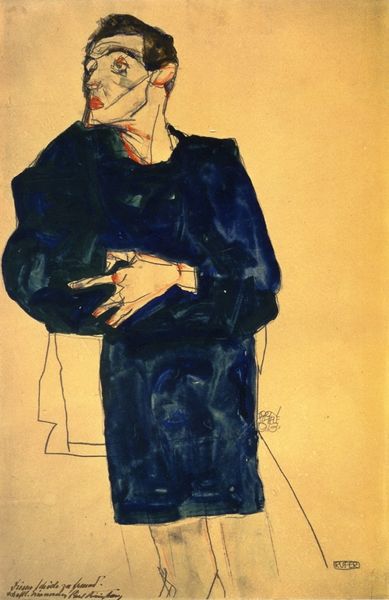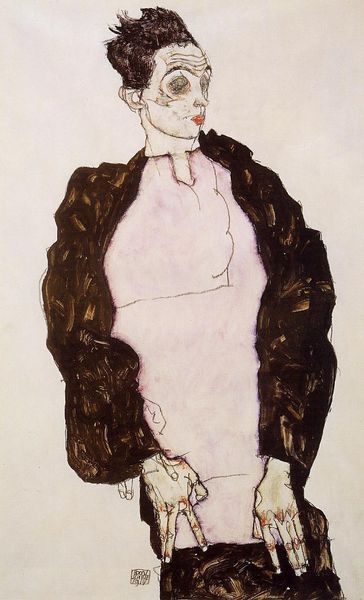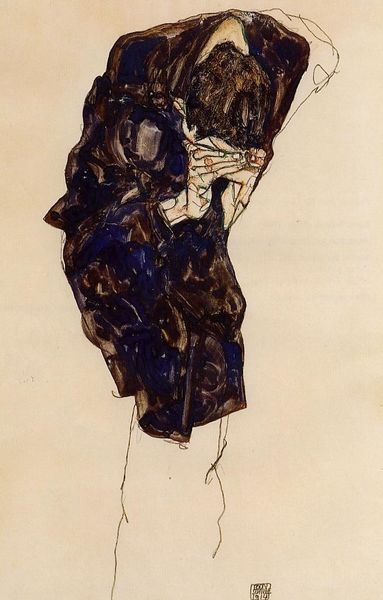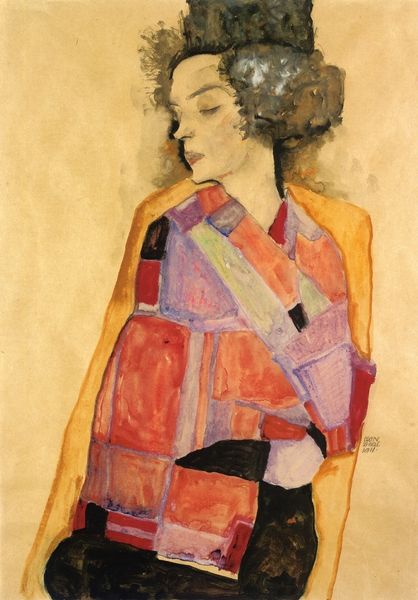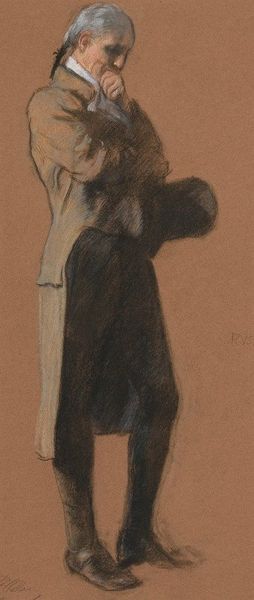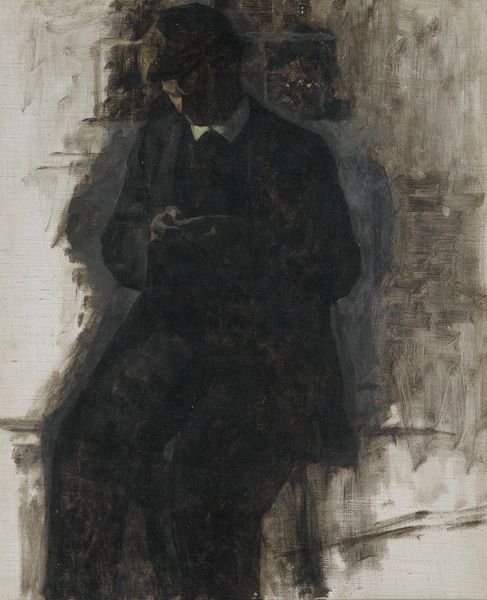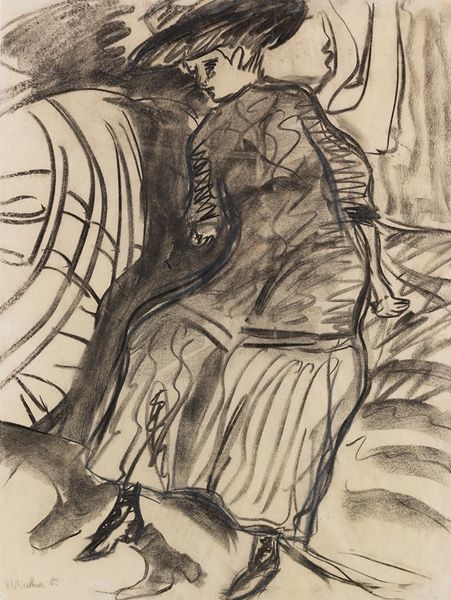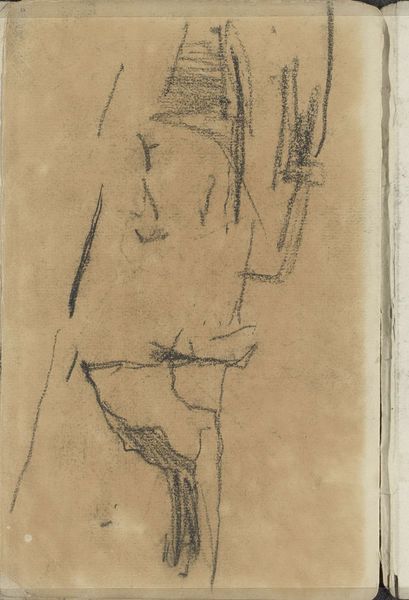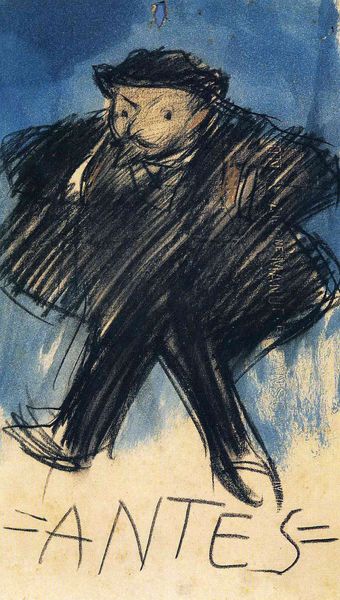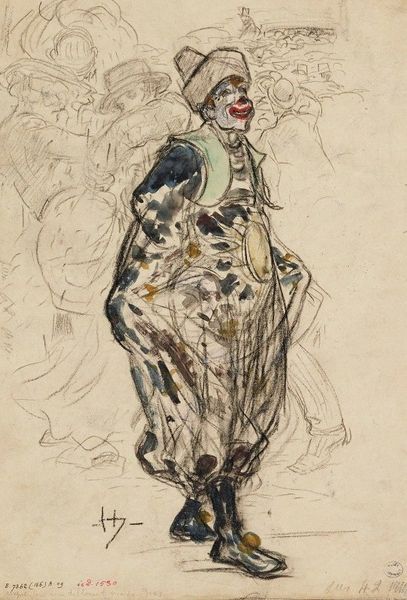
drawing, paper, watercolor, ink
#
portrait
#
drawing
#
charcoal drawing
#
figuration
#
paper
#
watercolor
#
ink
#
child
#
expressionism
#
watercolour illustration
Copyright: Public domain
Curator: Here we have Egon Schiele's "Child in Black," a 1911 piece held in a private collection. It’s executed using a combination of ink, watercolor and charcoal on paper. Editor: It's remarkably somber. The washes of ink create a clinging darkness about the figure, particularly that dense black outfit... almost like a shroud. It’s quite unsettling. Curator: The Expressionists were very concerned with conveying raw emotion. Schiele frequently depicted children, sometimes drawing criticism for it. One wonders about the context of these works and how they circulated at the time. Editor: Precisely. Look at the quick, almost brutal strokes of charcoal defining the face. The paleness of the skin juxtaposed with the smeared, dark clothing speaks to a vulnerability and perhaps even an exploitation that existed during that period. Think about child labor, the lack of social safety nets. Curator: His use of watercolor adds a layer of fragility. Notice the way he barely suggests form, especially in the child's hand, or rather stump where a hand should be, giving it this ethereal, almost ghostly quality. It speaks to the materials available to him and what was prized in the market at that time. Editor: The very limited palette draws attention to the stark emotional content. How the piece may have functioned for Schiele in a society grappling with anxieties around childhood. Did this reflect how many people at the time viewed youth? Curator: Certainly the composition demands attention too: The blank, undefined space isolates the child and contributes to that sense of unease. Editor: Indeed. These raw materials--charcoal, ink, watercolor on paper--served Schiele's express intention perfectly. Curator: I'm left wondering how viewers responded when first seeing art depicting children this way, especially amidst wider discourse around societal power and expectations. Editor: It definitely encourages us to re-evaluate not just the aesthetic value but the underlying concerns Schiele voiced about innocence and exploitation that still echo today.
Comments
No comments
Be the first to comment and join the conversation on the ultimate creative platform.
